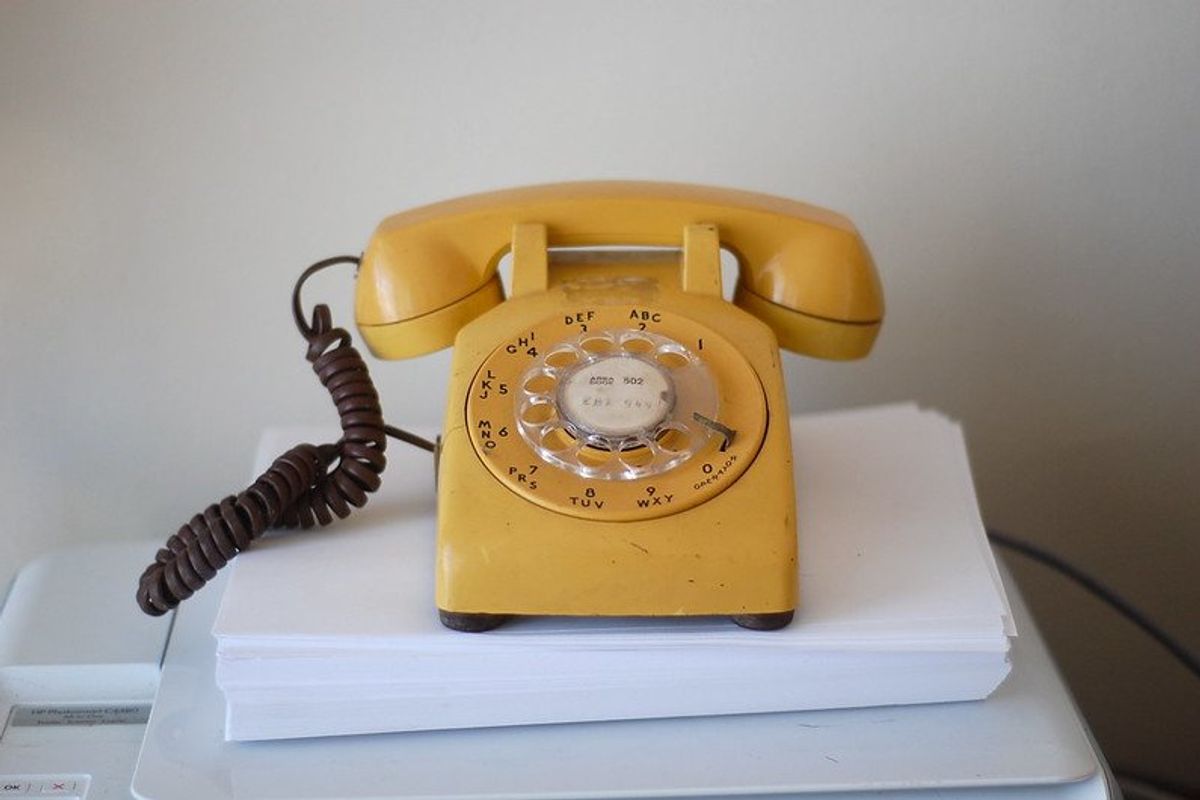Teens were challenged to dial a number on a rotary phone in under 4 minutes. Could they do it?
“What’s with all the holes?”

A beautiful vintage rotary phone.
The rotary phone was ubiquitous until the late ‘80s when they were replaced by push-button telephones. Then, at the turn of the millennium, those were rendered obsolete by smartphones. So anyone born in the late 1990s may have never encountered a rotary phone, even though they were in everyone’s houses for decades.
It’s been years since most people dialed a rotary phone, but that familiar mechanical swish sound that happens when dialing a number is still etched in everyone’s memory.
A video of a father, Kevin Bumstead, challenging two 17-year-olds (his son Jake and nephew Kyle) to dial a phone number on a rotary phone in 2019 is making the rounds again on social media. The original video debuted on Facebook and has received over 20 million views.
Bumstead gave the teens four minutes to try to dial a number. Could they do it?
Kyle was unsure how to approach the mysterious object. “What’s with all the holes?” he asked innocently. After numerous starts and stops, the cousins figured out how to dial the number. Did they make it on time? You’ll watch the video and see.
“I love how they lift the receiver up and put it back down to 'reset' it," Robert Haskell commented on YouTube. "What I found most interesting is how the mom thought that the dial tone would be a clue to a teenager that has likely never heard one," Giancarlo G added.
It’s fun to see the teens use their problem-solving skills to unlock the mystery of the rotary phone. But it’s also a reminder that time flies and every technological marvel that seems normal today will one day be obsolete.
- People are sharing things teachers did in the '80s and '90s that would 'never fly' now ›
- Mashup of long-gone sounds from the '80s and '90s is a burst of pure nostalgia ›
- This 1980 promotional video for ABC is creating waves of fun nostalgia ›
- Mom takes away 11-year-old's smartphone - Upworthy ›
- Mom warns teens about Nokia bringing back flip phones - Upworthy ›
- When's the best age for a kid to have a smartphone? - Upworthy ›
- Guy who cut down his phone usage by 80% shares his tips - Upworthy ›





 Vincent Van Gogh's Self-Portrait, 1889Image via
Vincent Van Gogh's Self-Portrait, 1889Image via  Turbulent flow illustrated and animated.
Turbulent flow illustrated and animated. Animation of art referencing science.
Animation of art referencing science. Animated Starry Night
Animated Starry Night An animated depiction of The Scream.
An animated depiction of The Scream. People clinking their glasses of red wine for a cheers.
Photo by
People clinking their glasses of red wine for a cheers.
Photo by  I Love You Elf GIF by MOODMAN
I Love You Elf GIF by MOODMAN "Love you!" Oops.
"Love you!" Oops. Green Flag GIF by The Last Talk Show
Green Flag GIF by The Last Talk Show Embarrassed Hide GIF by flor
Embarrassed Hide GIF by flor gorilla hurrying GIF
gorilla hurrying GIF Gorillas are generally pretty chill.
Gorillas are generally pretty chill. A court reporter taking notes.via
A court reporter taking notes.via Depiction of Jesus Christ in Heaven.via
Depiction of Jesus Christ in Heaven.via A photo of Santa Claus.via
A photo of Santa Claus.via